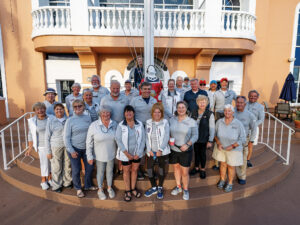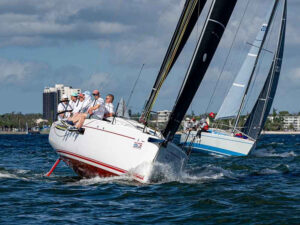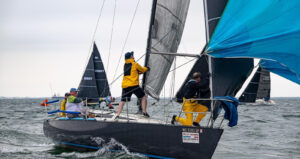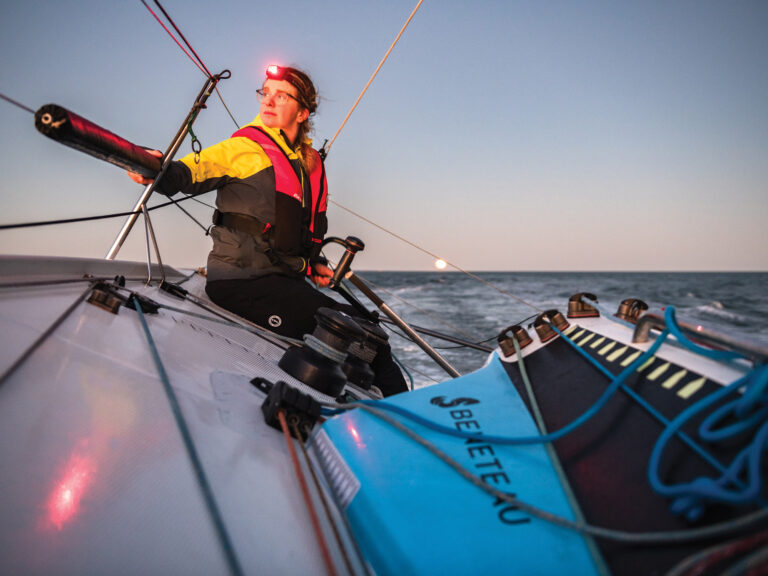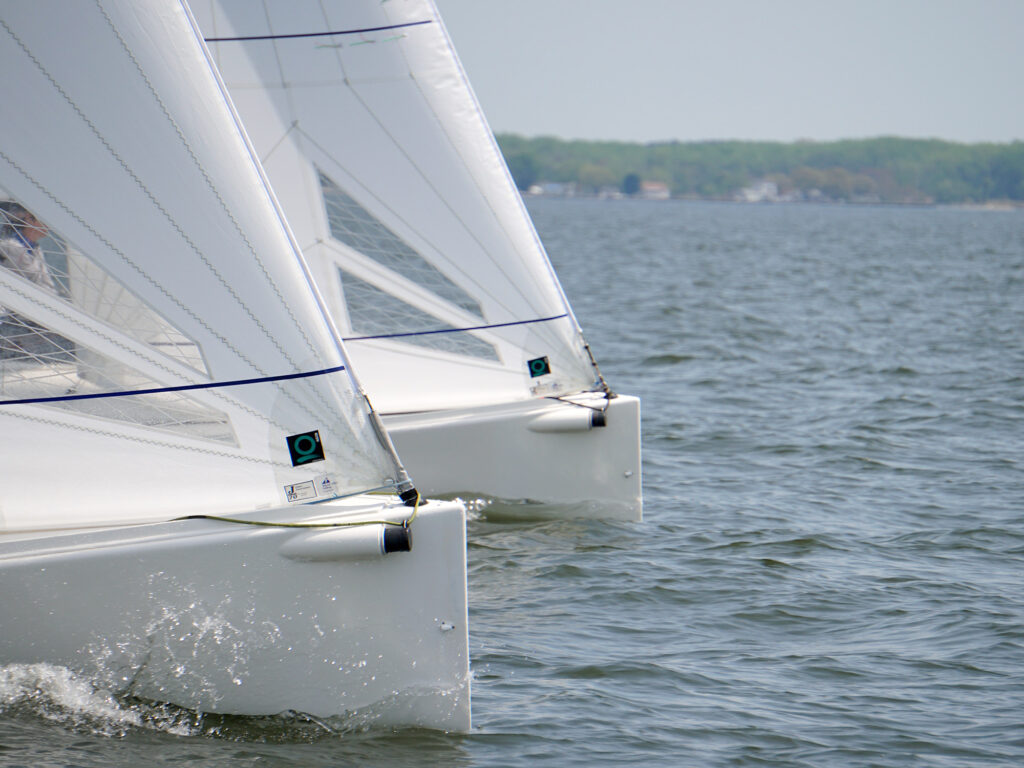
Any summer sailing in New England is hard to beat, so Quantum expert Carter White breaks down how you can make the most of your time in Marblehead.
I have raced in and around Marblehead since the late 1980s and witnessed almost every condition, from a drifter to a hurricane. I’ve probably sailed in every location the clubs use for their various racing circles, and I’ve also helped organize the ONE Regatta (previous PHRF-NE and current Ted Hood Regattas) and the 2014 J/105 North Americans. Through it all, I’ve seen that each circle brings its challenges, trends, and conditions, which I will try to break down here.
Outside Course (aka Outside Line)
The outside course is the area furthest offshore and most to the right of the harbor when looking away from land. The course is normally centered 3.25 NM at 175° (magnetic) from Marblehead Bell RG “FR” but can often be closer to shore. Typical conditions for this course would be no wind in the morning and a sea breeze filling in during the afternoon, around 1pm or so. If this is the case and there haven’t been any significant storms immediately ahead of the sailing day, you should have relatively flat water with possible one-foot easy rollers.
The key to success is to figure out the current/tide. The current/tide does not go out from land and into land during the ebb and flood, but the current goes left to right or right to left (looking out from shore toward the southeast), moving slightly northeast/southwest.
The wind will fill from the southeast, probably around 130 to 150 degrees, and it will be stronger away from land as it fills. The current is usually uniform across the course, and, with a predicted direction of 170 to 180 degrees, the race committee will often skew the course to the right. The RC knows people want to go left, so the skew keeps things even. But even with the skew to the right, the pressure is more to the left, so starting at the pin and going left is key upwind. Downwind you almost always stay straight at the windward mark and work the edge of the course down to the corner and gybing on layline or close to it. This keeps you in the bigger pressure downwind on the course’s left side (looking upwind). All of this is happening early in the day of racing, around 1pm to 3pm.
After 3pm, you need to start looking at the right side of the course. Typically, the lower left will still be favored, but watch out for the top right as the wind moves from 130 to 170 degrees or more as the day progresses. Often the shift doesn’t outweigh the pressure, but if you see large, puffy clouds over Boston (to your right looking upwind), you can predict the right shift will happen. Finally, remember the current as it will be critical for starting and laylines, not necessarily for course-side advantages. History has rewarded the folks who won the corners on this course and timed the shift and pressure perfectly.
As you are waiting for the typical conditions I’ve described or are in a different northerly breeze with predictions to shift, watch the clouds onshore over Salem. If the big, puffy clouds start forming, the sea breeze is coming. The land breeze will continue if wispy high clouds remain and there are no puffy clouds.
Finally, like anywhere, the typical conditions occur 50 percent of the time, while anything else happens the other 50 percent. In this case, be prepared for chop and rollers. The current is strong, and when going against the breeze, it will create a decent 1- to 2-foot chop on top of one- to three-foot rollers that may or may not line up with the chop. If this is the case, make sure to have plenty of twist and power; you will need the twist to drive around the waves and keep the helm light while still having enough power to go through the occasional wave you can’t miss. In most boats, this means playing the backstay almost constantly.
The Halfway Rock Line
Much of the outside line details and tips and tricks can also apply to the halfway rock line. However, the current can be trickier on this course. This circle is typically centered 2 NM at 135° (magnetic) from Marblehead Bell RG “FR” and is more exposed to Salem Bay and the Danvers River. Here you will have potentially two different currents: one coming from and going to land (in and out of Salem west/east) and another northeast/southwest like the outside course. This creates more disturbed water and chop than the outside course.
With the typical conditions I’ve described, the starting line will be set closer to shore and in one current, while the weather mark will be in a completely different current. This is key for starting and approaching the marks, and can make or break the downwind leg, possibly because you may want to use the current to your advantage when picking a side.
The Tinkers Line
In my experience, this course can be the trickiest. This circle is just outside Marblehead Harbor and closest to Marblehead Neck, the largest land mass. On this circle, you can see up to three different current directions on one leg, and the land can become a factor creating a constant geographical advantage. On this line, it is imperative to have a training partner to sail upwind on opposite tacks for five minutes or more and then come back together to see who is ahead or behind. There will often be a significant difference, and it will only be clear sometimes which side will win. In my experience, heading towards land has paid off in most conditions on this course; however, there are times you must go offshore to get more breeze.
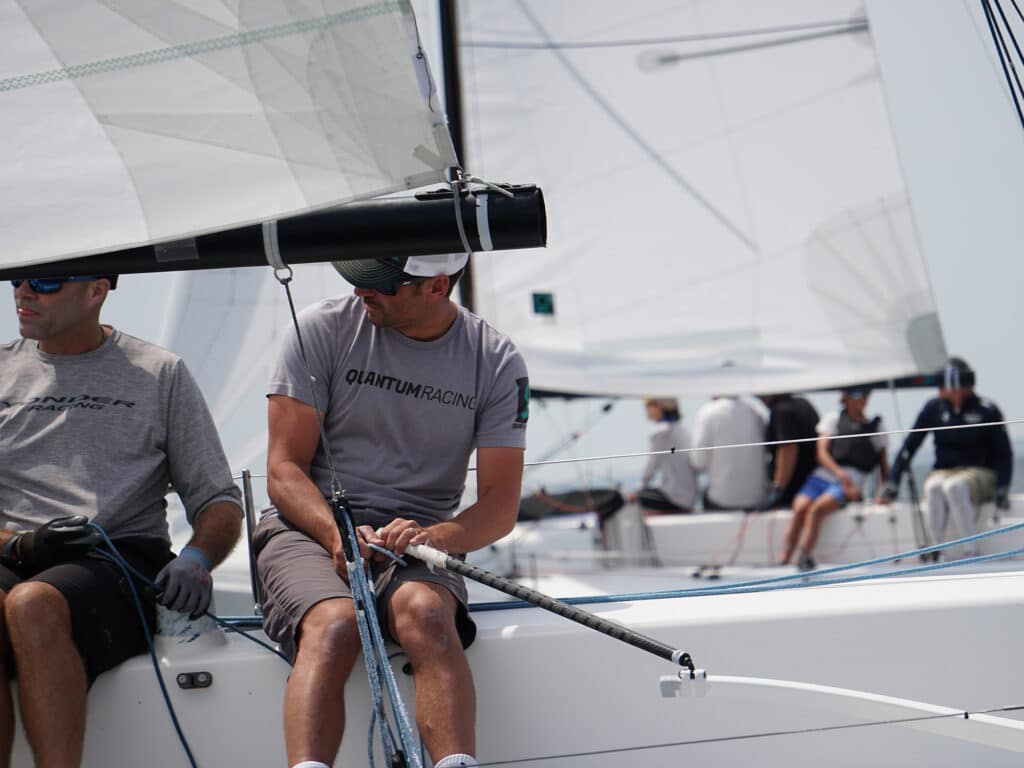
The Brimbles Line
This is typically where the lasers or smaller boats sail as it is protected by islands on almost all sides of the course. It is closest to Salem Harbor and is the most inner course. Its challenge is boat traffic on the weekends. Many sailboats and powerboats are leaving and returning to Salem and Marblehead Harbors, and this course is at the crossroad of those trips. This often causes square chop even when the wind and current are lined up for a smooth day. On this line, you are closest to Salem Harbor and Danvers River, which will be the predominant currents (generally west/east). Due to the proximity of the islands, the winds are much less stable, so this circle typically has much shiftier winds. Here, the shifts become more important than the pressure, so staying on the lifted tack is critical.
If you have any questions, get in touch with a Quantum representative to discuss your racing further. Good luck, and welcome to Marblehead!


